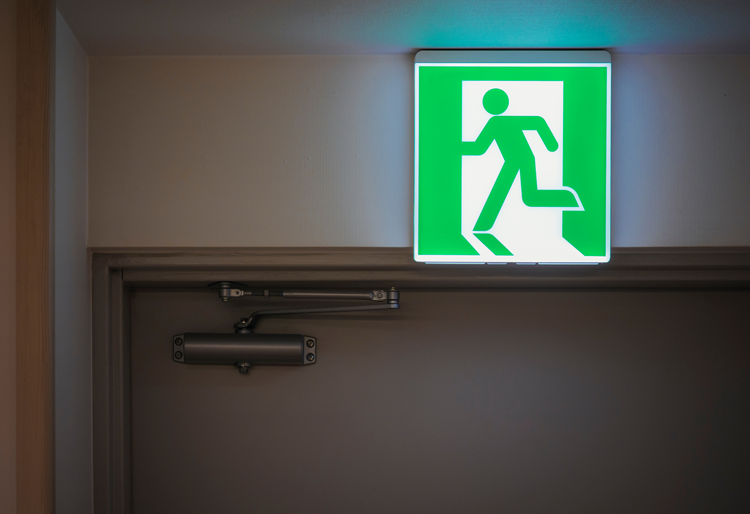Martyn’s Law, now the Terrorism (Protection of Premises) Act 2025, sets out new legal standards to help protect the public from terrorism. The Home Office’s new ‘Myth Buster’ guide clarifies common misconceptions and helps small businesses prepare for upcoming changes.

In this article:
‣ Do businesses need to comply to Martyn's Law straight away?
‣ Will complying with Martyn's Law be expensive?
‣ Is there a risk of shops being shut down due to Martyn's Law?
‣ How much is involved in getting ready for the Martyn's Law changes?
Martyn’s Law, officially known as the Terrorism (Protection of Premises) Act 2025, aims to bolster public safety by requiring certain premises and events to consider and implement proportionate security measures to protect staff and visitors from the impact of terrorism.
The Act received Royal Assent on 3 April 2025, marking an important step in strengthening the UK’s resilience against such threats.
Implementation is expected to take at least 24 months, allowing businesses time to understand their obligations, prepare appropriately, and for the Security Industry Authority (SIA) to establish its new regulatory role.
While the Home Office is developing detailed guidance, the National Counter Terrorism Security Office (NaCTSO) will release the ‘Guide Shelter Report’ in November 2025, offering practical business-focused advice on Martyn’s Law. This will complement existing ‘Run Hide Report’ guidance, which is primarily aimed at the public. Bira will be updating this guidance in line with any new information upon the release of this guidance.
The Home Office has also published a “Myth Buster” document to clarify common misconceptions around the new legislation. The following key points provide a summary for small and independent businesses, with further details available in the full guide.
MYTH 1 – Businesses must comply immediately
- The Act will not come into force for at least 24 months after Royal Assent.
- There is no legal requirement to comply yet, but it’s sensible to start planning.
- The Home Office will issue guidance and hold webinars during the implementation period.
- Helpful resources are available on ProtectUK, including the Action Counters Terrorism (ACT) e-learning and See, Check and Notify (SCaN) materials.
MYTH 2 – Protective security doesn’t matter if you’re not in scope
- Even if you are not covered by the Act, developing a strong security culture is encouraged.
- Businesses can still take proportionate steps to reduce risk and improve response capabilities.
- More information is available at ProtectUK.
MYTH 3 – Compliance will be expensive
- Estimated annual costs: around £330 for standard tier premises (200–799 people) and £5,210 for enhanced tier premises (800+ people).
- Most costs relate to staff time, not equipment.
- The standard tier focuses on basic procedures such as evacuation plans, while enhanced tier premises may require proportionate additional measures like training or CCTV.
MYTH 4 – Inspections and notifications will cost money

The SIA will not charge fees for inspections, advice or notifications.
Businesses will be informed well in advance about when and how to notify the regulator.
MYTH 5 – The regulator will close down businesses
- The SIA will only restrict operations in exceptional circumstances where there is a clear public safety risk.
- Its approach will focus on advice and guidance first, with formal enforcement used only when necessary.
MYTH 6 – Every site must have an individual as the responsible person
- The responsible person is whoever controls the premises for its relevant use – often a company or organisation, not necessarily an individual.
- Enhanced tier organisations must also designate a senior individual responsible for compliance.
MYTH 7 – Hirers of premises are responsible
- Responsibility typically lies with the operator of the venue, not those hiring it.
- Hire contracts may include relevant terms, but legal responsibility under the Act does not transfer to hirers.
MYTH 8 – Every event must be notified to the regulator
- Enhanced tier premises do not need to notify the SIA of every event.
- Standard tier venues may need to notify for occasional large-scale events.
- Guidance will clarify what qualifies as a “one-off” or “occasional” event.
MYTH 9 – Trauma First Aid kits are mandatory
- There is no requirement to provide medical equipment under the Act.
- However, businesses are encouraged to consider appropriate first aid provisions.
- Advice can be found on ProtectUK’s First Aid Awareness page.
MYTH 10 – Businesses must buy external services
- The Home Office intends that compliance will be straightforward and self-managed, without the need for external consultants.
- No third-party products or services are endorsed by the Home Office, SIA, or NaCTSO.
- Official guidance will clearly set out the requirements for compliance.
Read the full document for a comprehensive fact file on each ‘myth’ and further detailed guidance on preparing your business for Martyn’s Law.
See the full 'Myth Buster' guidance from the Home Office
View and download the full factsheet from the Home Office to get all details and seperate the facts from the myths.
Click below to access the full document.
Image credit: VTT Studio/stock.adobe.com; Nattawit/stock.adobe.com; Eakrin/stock.adobe.com
Related Resources
-
A Christmas Message from Bira CEO Andrew Goodacre
"Independent is not ‘dead’ – it is changing and indie retail continues to be an integral part of the UK retail sector." Read Bira's Christmas message from Andrew Goodacre, CEO.
-
Campaign Focus | December 2025
Fallout from the "unwelcome" Budget and ongoing retail crime challenges are among the areas of focus for Bira this month.